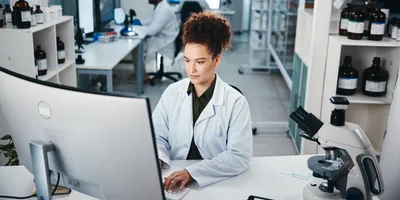Transgenic Lettuce Could Help Astronauts Combat Osteopenia During Long-Duration Space Travel
Extended space travel presents numerous challenges to astronauts, one of the most critical being bone loss due to microgravity. Studies have shown that astronauts can lose more than 1% of their bone mass per month while in space—a condition known as osteopenia. With NASA planning a three-year mission to Mars in the 2030s, researchers are exploring innovative ways to mitigate this issue, and one potential solution involves growing transgenic lettuce in space.
The Challenge of Osteopenia in Space
Currently, astronauts aboard the International Space Station (ISS) follow a rigorous daily exercise regimen to slow bone loss. However, ISS missions typically last only six months. In contrast, a Mars mission would require astronauts to spend ten months traveling to the Red Planet, followed by a year in orbit and another ten months for the return trip. This prolonged exposure to microgravity could leave astronauts highly susceptible to osteopenia, increasing the risk of osteoporosis and long-term health complications.

A Plant-Based Pharmaceutical Solution
While an existing medication containing a fragment of human parathyroid hormone (PTH) effectively stimulates bone growth, it must be administered through daily injections. Transporting large quantities of this medication and the necessary syringes would be impractical for a Mars mission. To overcome this challenge, a research team at the University of California, Davis, led by graduate student Kevin Yates and professors Somen Nandi, PhD, and Karen McDonald, PhD, has developed a way for astronauts to produce the hormone themselves—by cultivating transgenic lettuce in space. This research was presented at the 2022 American Chemical Society (ACS) spring meeting.
According to the researchers, this bioengineered lettuce could provide a fresh, edible source of the PTH hormone, reducing reliance on injectable medications. "Astronauts can carry transgenic seeds, which are very tiny—you can have a few thousand seeds in a vial about the size of your thumb—and grow them just like regular lettuce," Nandi explains. "They could use the plants to synthesize pharmaceuticals, such as PTH, on an as-required basis and then eat the plants."
Engineering Lettuce for Maximum Efficacy
Previous ISS experiments have demonstrated that astronauts can successfully grow lettuce in space. The UC Davis team has taken this a step further by engineering lettuce that expresses PTH in a form that can be consumed orally, eliminating the need for injections. To improve the hormone’s stability and effectiveness, the researchers attached a fragment crystallizable (Fc) domain of a human antibody to the PTH sequence. Studies have shown that this modification extends the time the peptide remains in circulation within the bloodstream, enhancing its efficacy.
Using Agrobacterium tumefaciens, the researchers introduced the PTH-Fc encoding gene into lettuce plants, yielding an expression level of approximately 1–12 milligrams of the modified hormone per kilogram of fresh lettuce. However, current estimates suggest astronauts would need to eat around eight cups of this lettuce daily to receive a sufficient dose of PTH—a challenge the team is working to address.
Future Optimization and Testing
To reduce the required intake, the researchers are actively working to increase the expression and bioavailability of PTH in transgenic lettuce. "One thing we’re doing now is screening all of these transgenic lettuce lines to find the one with the highest PTH-Fc expression," McDonald states. "We’ve just looked at a few of them so far, and we observed that the average was 10–12 mg/kg, but we think we might be able to increase that further. The higher we can boost the expression, the smaller the amount of lettuce that needs to be consumed."
Lab Quality Management Certificate
The Lab Quality Management certificate is more than training—it’s a professional advantage.
Gain critical skills and IACET-approved CEUs that make a measurable difference.
Before astronauts incorporate space-grown salads into their diets, the team must optimize PTH-Fc expression and conduct rigorous safety and efficacy tests through animal studies and clinical trials. Still, the researchers remain optimistic. "I would be very surprised that if, by the time we send astronauts to Mars, plants aren’t being used to produce pharmaceuticals and other beneficial compounds," Yates predicts.
Implications Beyond Space Exploration
While the primary goal is to support astronaut health, this innovation could have valuable applications on Earth. If proven effective, transgenic lettuce could be used to combat osteoporosis in resource-limited areas, providing a sustainable and cost-effective alternative to injectable treatments.
Conclusion
The development of transgenic lettuce represents a groundbreaking approach to addressing one of the key health risks of long-duration space missions. By enabling astronauts to produce essential medications in space, this research could revolutionize both space travel and healthcare on Earth. As NASA advances toward its goal of sending humans to Mars, solutions like these will be crucial for ensuring astronaut health and mission success.













